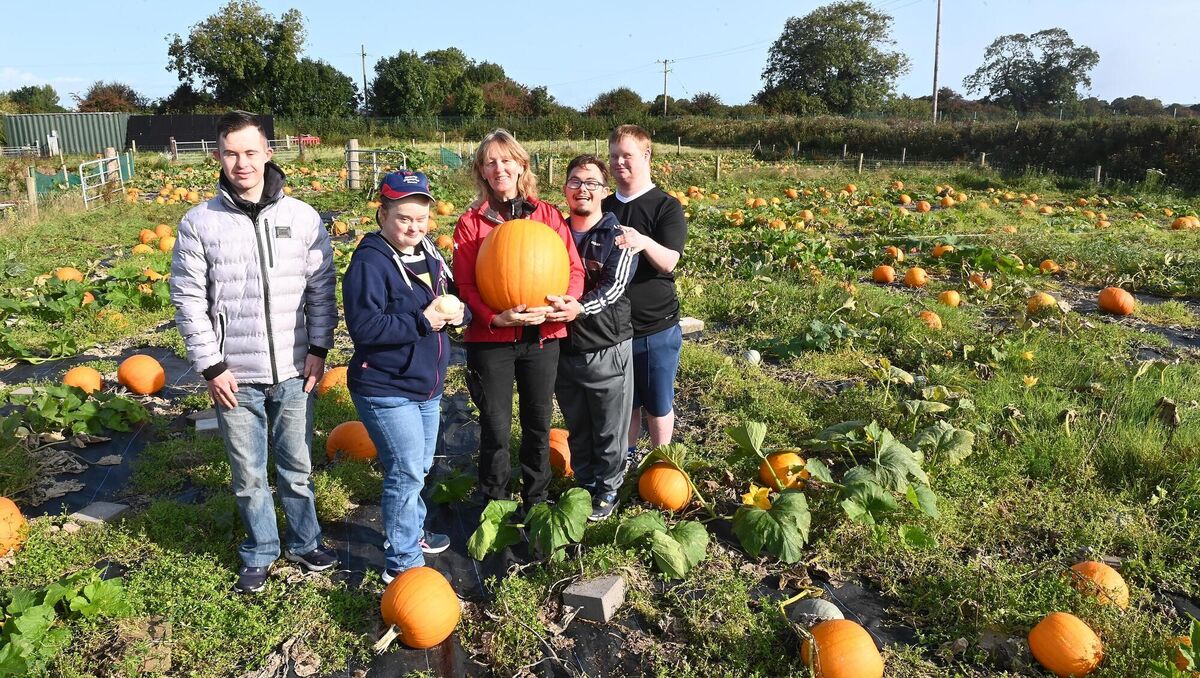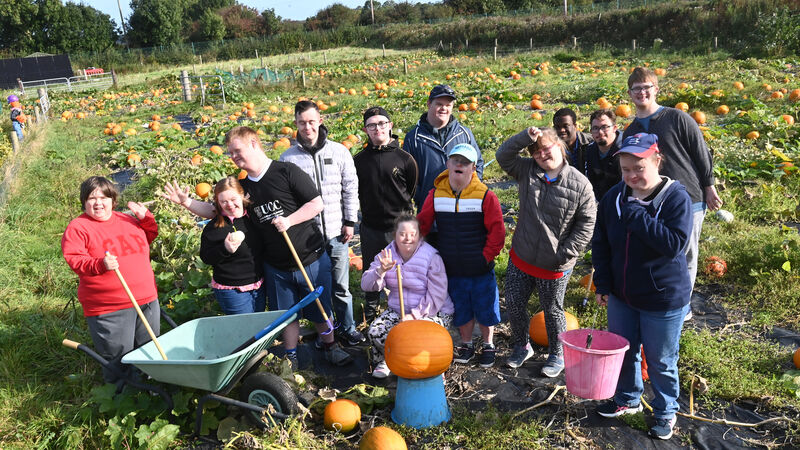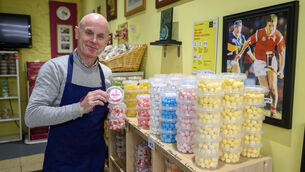It's a bright autumn morning and Nicky Green squints in the sunshine as she looks out across a curious landscape: Two small fields of about a third of an acre, covered in black weed membrane, with huge orange orbs dotted around its surface.
“The yield this year is slightly less,” she says. “But I’m still happy, still relieved. You never really know how it’s going to go; nature’s in charge.”
It is of course pumpkin season and Nicky is the head horticulturalist at Field of Dreams, Down Syndrome Cork’s social enterprise and education centre at the western edge of Cork City in Curraheen.
Field of Dreams holds an annual Pick-A-Pumpkin festival each October, over two weekends, where up to 3,000 visitors will attend a day of Halloween-themed family fun and get to choose a pumpkin to take home to carve.
It’s an important fundraiser for the Down Syndrome charity, and it’s also the culmination of more than half a year’s work for Nicky and the students who work with her to grow the pumpkins.
“We start in March and we sow 1,200 pumpkins into compost in little pots in the polytunnel and the students help with that,” Nicky explains. “They’re grown through until May or June after the last frost, and then they are hardened off and then they get planted out.”
This year, somewhere between 800 and 900 pumpkins survived to harvest. There are not only the traditional large orange variety, but also the blue-grey Crown Prince, which is a good eating variety; the orange and green Turkish Turban; and the appropriately named miniature white
variety, Baby Boo.
You might think that every child that visits wants a classic big orange pumpkin, but, Nicky says: “You’d be surprised. Sometimes when little children come in, they can’t lift or carry the big orange ones, so they’ll go for a little green stripey one.”
How and why pumpkin patches have become such a phenomenon in Ireland in recent years is up for debate.
If you look on Instagram, the photogenic nature of the huge orange fruits certainly seems to be a part of the allure and many of the pumpkin patches that have sprung up in increasing numbers over the past decade go to great lengths to fit in with a seasonal aesthetic largely derived from US traditions and films: Straw, corn mazes, scarecrows, and witches all feature heavily.
The tradition of carving pumpkins for Halloween is of course a recent US import, but it does have Irish roots.
Irish and Scottish people traditionally carved demonic faces into turnips to ward off spirits for the ancient Celtic festival of the dead called Samhain; the tradition was exported to the US, where emigrants turned to pumpkins, which were cultivated by First Nations people as a food crop.
Pumpkins are in the cucurbit family, alongside cucumbers, melons and squash.

At Field of Dreams, pumpkins are part of a field-to-fork ethos that brings clear educational benefits: Students aren’t only learning about Halloween, but also about the seasonality of food production, about the steps needed to germinate and care for food crops, right the way through to tasty recipes and how to avoid food waste.
Ireland now also seems to be following the US trend towards fake “pumpkin patches” that are in reality little more than social media photo opportunities: Pumpkins that are grown elsewhere and placed in a straw-strewn field for that crucial couple of weeks before Halloween.
Many parents are just looking for a nice seasonal activity for kids and a couple of snaps for the family album so those pumpkin patches may suit just fine, but those who want the experience to be educational as well as fun could try looking for genuine farms where the pumpkins are actually grown and you pick them from the plant.
“We are genuine, and we grow them here, and we’re proud of that,” Nicky says, looking around at the patch. “And it’s chemical free. That means we have to dig manure into the field to prepare it.”
The scariest thing about pumpkins is the food waste, in no small part due to their extremely short Halloween commercial season. Over one million pumpkins are sold in Ireland each year and, according to stopfoodwaste.ie, only 30% of Irish people say they make food out of their Halloween pumpkin.
At Field of Dreams, any pumpkins not snapped up by eager children during the pumpkin picking festival will be sold to restaurants, or else will go to feed the animals in Fota Wildlife Park, or to a local pig farmer.

Three more patches that grow their own pumpkins in Munster
Joe’s Farm Crisps, Killeagh, Co Cork
Joe and Sandra Burns grow around 5,000 pumpkins each year on their farm in East Cork. Starting at Mahon Point Farmer’s Market and growing their own veg business with value-added products like their gourmet crisps, Joe and Sandra are passionate about farming education and a visit to their pumpkin patch comes with the opportunity to see other veg growing and stock up on produce at their excellent on-site farm shop.
Pumpkin picking is every weekend in October.
The Farm, Grenagh, Co Cork
Mick Forde and Marie Forde in North Cork are another enterprising couple who in 2012 converted their farm into an education centre specialising in vintage farm machinery and techniques.
Tickets to pumpkin picking include access to their farm walk, playgrounds and barrel ride.
Killarney Pumpkin Farm, Headford, Co Kerry
Featuring a pumpkin pixie village, a corn maze, a haunted cottage, and a witch as well as a pumpkin picking patch, Killarney Pumpkin Farm just goes all out with theatrical seasonal additions to get people in the mood for Halloween.
Its pumpkin-picking dates are throughout October.

Unlimited access. Half the price.
Try unlimited access from only €1.50 a week
Already a subscriber? Sign in
CONNECT WITH US TODAY
Be the first to know the latest news and updates










